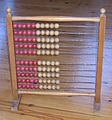Educational technologist facts for kids
An educational technologist is like a learning detective and inventor! They are experts who study how people learn best. Their main job is to find, create, and test new ways and tools to make learning easier and more fun for everyone. This doesn't just mean using computers or fancy gadgets. It's about understanding how our brains work when we learn. Many of their best ideas come from studying how people think and learn, which is called applied psychology.
Sometimes, these experts are called 'instructional technologists' or other similar names. For example, at the Open University in the UK, they used to call their department 'Applied Educational Sciences'. A famous example of their work is the TV show Sesame Street. The people who created the show hired experts to test all the programs before they aired. This helped make sure the show was really good at teaching kids, which is exactly what an educational technologist does, even if they weren't called that at the time.
Contents
What Do Educational Technologists Do?
Educational technologists work to improve how we learn in many different places. They might help design lessons for schools, training programs for jobs, or even fun educational games. They look at how people learn and then figure out the best ways to teach new skills or information.
Making Learning Easier
Imagine you're trying to learn something new, like how to play a musical instrument or solve a tricky math problem. An educational technologist would think about:
- What's the best way to explain this? Should it be a video, a game, or a hands-on activity?
- What tools can help? Maybe a special app, a fun worksheet, or a group project.
- How can we tell if it's working? They check if students are actually learning and enjoying the process.
They use their skills to make sure that learning is clear, engaging, and effective for all students.
Beyond Computers
While technology is a big part of their name, educational technologists don't just work with computers. They also think about things like:
- How classrooms are set up.
- The best ways for teachers to explain things.
- How students can work together.
- Even simple tools like whiteboards or special learning blocks.
Their goal is always to improve the process of learning, no matter what tools are used.
Related pages
Images for kids
-
Early 20th-century abacus used in a Danish elementary school
-
A 2.5 m teaching slide rule compared to a normal sized model
See also
 In Spanish: Tecnología educativa para niños
In Spanish: Tecnología educativa para niños




















